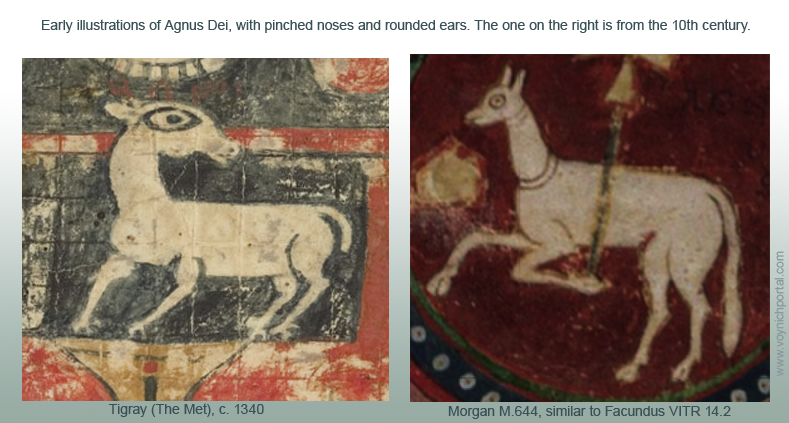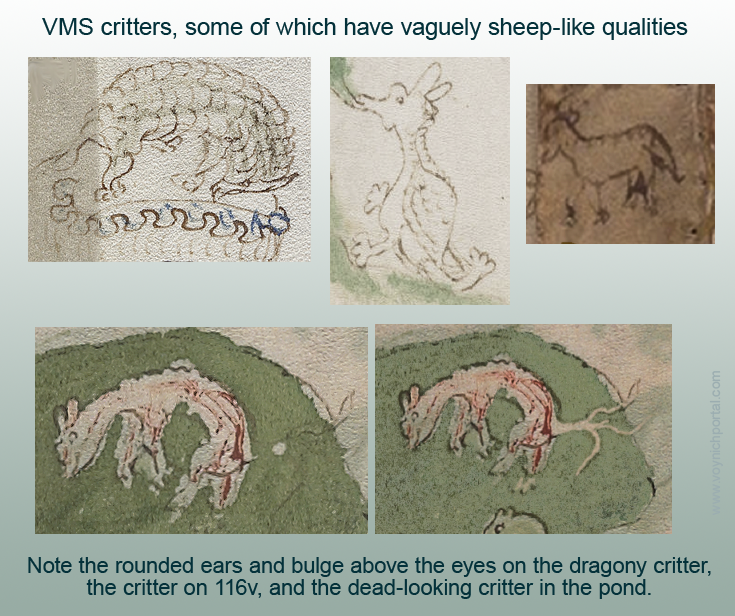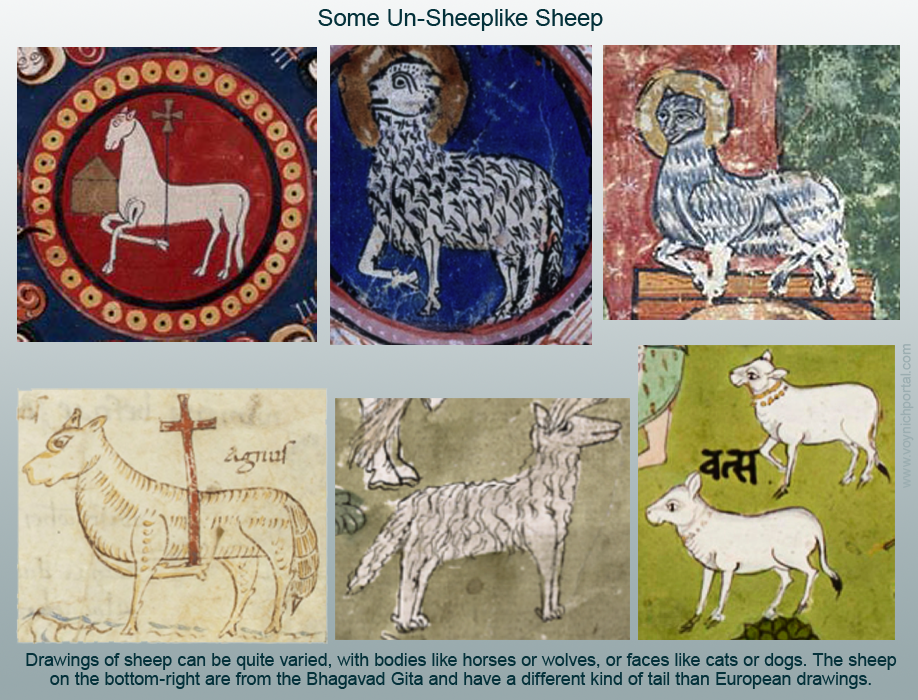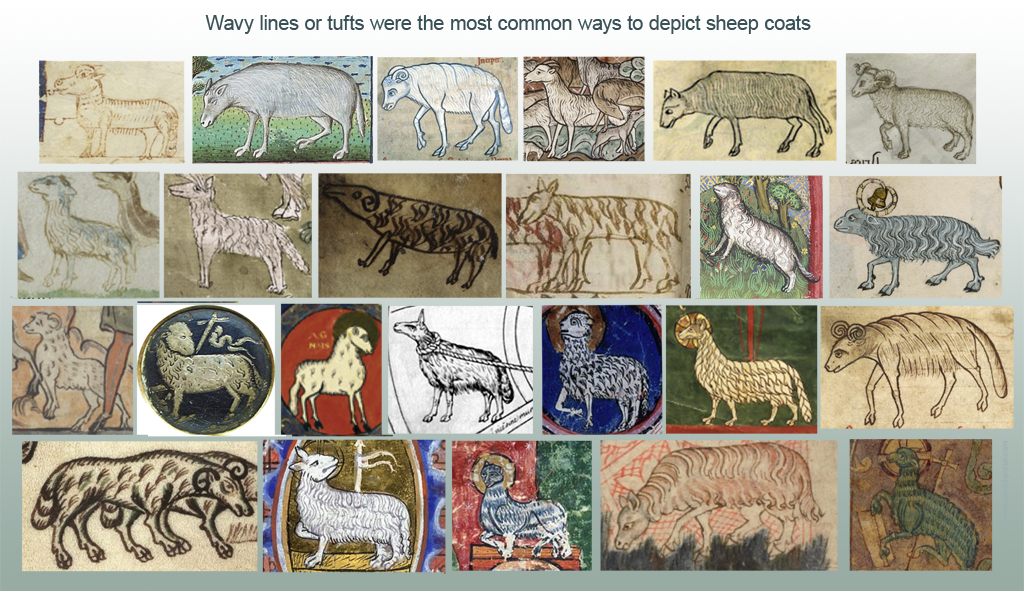Fāraskūr There are a number of critters in the VMS that have sheeplike qualities, especially if one considers the wide range of sheep drawings one finds in the Middle Ages. I’m extremely busy right now, so I have to rush this out on my lunch break and get back to work, and can’t comment on these drawings in depth, or provide links, but I’ll put them out there for those who are interested…
Here is a small selection of critters in the VMS that have been likened to sheep in one way or another:
There are many ways one can analyze medieval sheep drawings based on drawing style and individual features. There are also some peculiar ones, such as sheep that look like horses or wolves, and sheep with leopard or dog faces. I also noticed that the tails of sheep were generally quite long and, in contrast to the fluffy tails of European drawings, sheep from a Bhagavad Gita illustration have skinny tails with tufts on the ends:
One can also look at the way the coats are drawn, some with dots, others with rough or regular lines, some with tufts. Note how each of the coats in the VMS drawings is different. Either this is a very creative person or the illustrator may have been looking at examples from different sources.
Here are sheep textured with dots, spots, or curved and wavy lines:
Sometimes the texture is artistically shaped, blended, or drawn with different colors:
 The most common way to draw the sheep bodies was with lines following the direction of the coat, especially tufts:
The most common way to draw the sheep bodies was with lines following the direction of the coat, especially tufts:
Sometimes the artist took this idea a step further and rendered the tufts as wave-like curlicues, scales, or calligraphic shapes. Some depicted practical considerations—the drawing on the right has four deliberately different coat textures:
 In terms of drawing style, there were two very early drawings that caught my eye. They have the pinched nose and pointy rounded ears one sees on the VMS dragony critter and dead-looking pond critter. This doesn’t necessarily mean a connection, but I found them interesting nonetheless. Note that the one on the right, which illustrates the lamb of God, has a body that looks more like a horse than a sheep and the one on the left also has a rather long neck for a sheep (even one that is recently shorn):
In terms of drawing style, there were two very early drawings that caught my eye. They have the pinched nose and pointy rounded ears one sees on the VMS dragony critter and dead-looking pond critter. This doesn’t necessarily mean a connection, but I found them interesting nonetheless. Note that the one on the right, which illustrates the lamb of God, has a body that looks more like a horse than a sheep and the one on the left also has a rather long neck for a sheep (even one that is recently shorn):
 The VMS drawings sometimes have more in common with drawings of the early and middle medieval periods than the late 15th century. This might indicate access to a library that included early manuscripts, or it might be a consequence of limited drawing skills. Note that the sheep on the left has paws, just as the VMS zodiac hooves are somewhat rounded and paw-like.
The VMS drawings sometimes have more in common with drawings of the early and middle medieval periods than the late 15th century. This might indicate access to a library that included early manuscripts, or it might be a consequence of limited drawing skills. Note that the sheep on the left has paws, just as the VMS zodiac hooves are somewhat rounded and paw-like.
I have more sheep drawings but this is all I have time for at the moment. One thing I always notice when looking at VMS animals, that stands out from other medieval drawings, is that they are usually smiling. This, in combination with the fact that there are no obvious signs of weapons anywhere in the manuscript, other than the traditional Sagittarius bow and one pointy finger, makes me wonder if whoever created the drawings led a sheltered life.
J.K. Petersen
© Copyright 2018 J.K. Petersen, All Right Reserved




